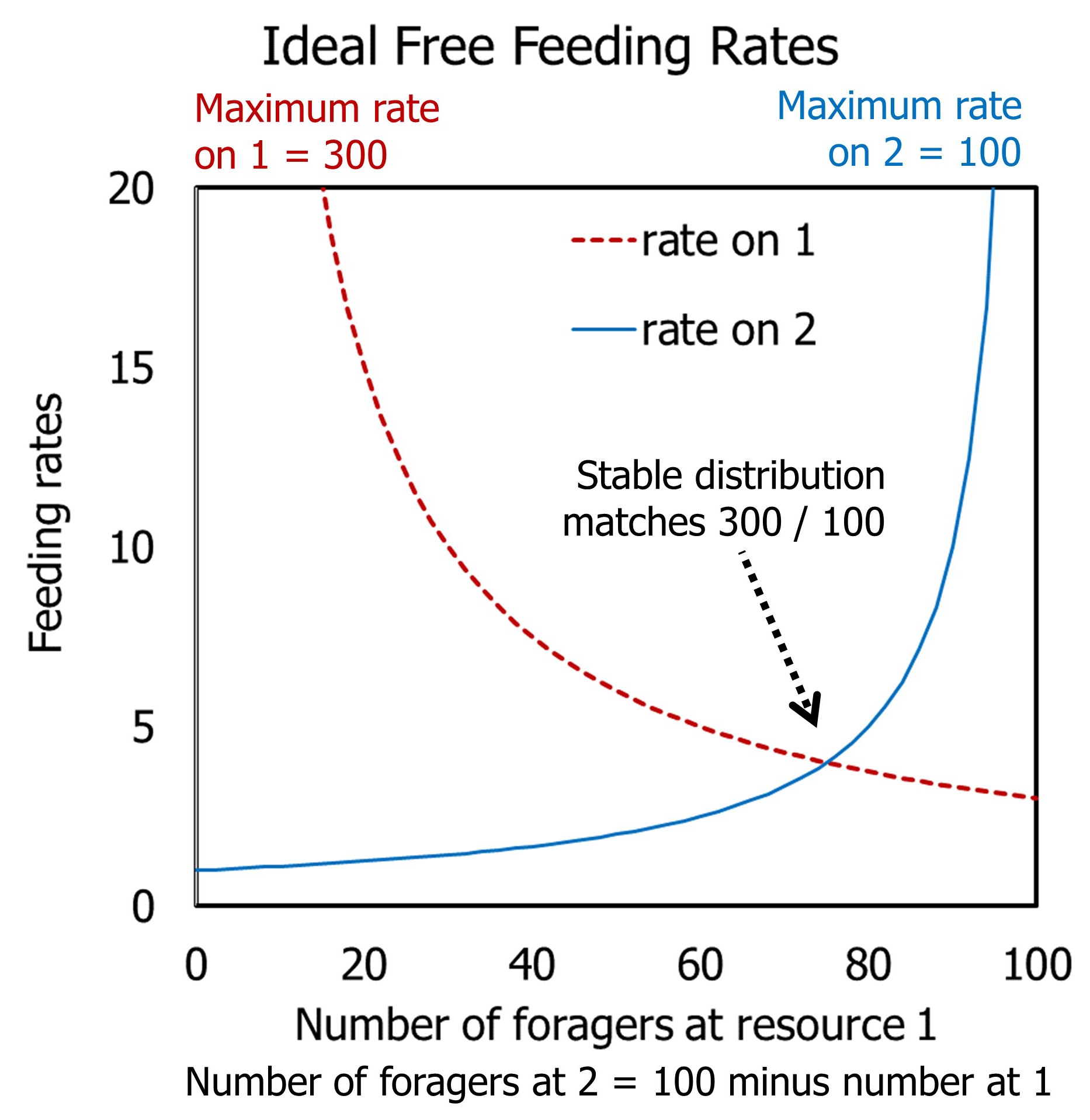The distribution of animals that maximise their feeding rate under competition should be matched to the distribution of resources
Background
Animals can be assumed to have methods for looking for food that maximise their gain. Foods are distributed patchily around different resources, and these have different available amounts of food. Animals have to compete with other foragers, especially of their own species, for food. For example, birds would get much more food at bird tables if there were no other individuals. Animals will have evolved behaviours that help them deal with various food availability and competition for that food. This model predicts what this means for how animals will tend to be distributed around their food sources.
Findings
The animals are assumed to have perfect information about the rate of renewal of resources in every patch. For example, nectar secretion rates by different plants. They are also assumed to be free to move to whichever patch they want. For example, bees can fly around looking for nectar. These assumptions give the Ideal Free Distribution of animals. The prediction is that all will move until they have equal feeding rates. This means that the ratio of the numbers of animals at different patches will match the ratio of the renewal rates (“input matching”). This happens because if the feeding rates are unequal then each individual would move to improve their feeding rate. When no individual can move to improve the feeding rates must be equal.
Implications
The basic prediction is that animals will be distributed according the distribution of resources. The same principle apply to competition for mates. Here, one sex is the resource (usually females because they have limited eggs) and the other sex distributes themselves to have equal chance of mating. An everyday example is use of checkouts in supermarkets, where customers distribute themselves equally among the checkouts. It may be that animals can distribute ideally just by moving around a lot until they can’t improve their feeding rate, but often there will be constraints on their ability to do so, or limits on their knowledge, so there will often be deviations from the predictions, but these deviations tell us more about their abilities and behaviour.
Subject
Behavioural ecology
Subject Group
Zoology and Ecology
Keywords
patches
resources
foraging
knowledge
competition


